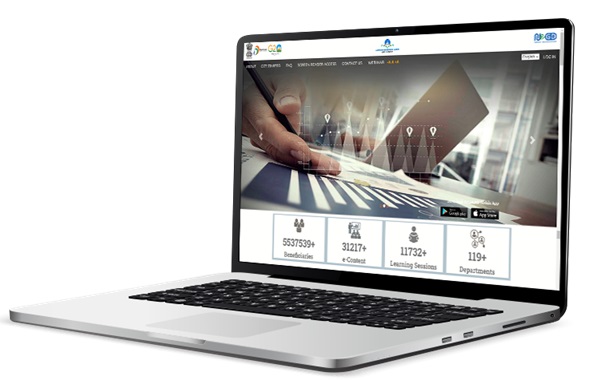Organisation : Government of India (Digital India)
Scheme Name : Learning Management System (LMS)
Applicable State/UT : India
Website : https://www.digitalindia.gov.in/initiative/lms/
Sponsored Links:
| Want to ask a question / comment on this post? Go to bottom of this page. |
|---|
What is Learning Management System (LMS)?
The Government of India launched the groundbreaking Learning Management System (LMS) in e-Governance initiative as part of the Digital India Programme in 2015 with the goal of using IT as a growth engine to convert India into a knowledge economy and digitally empowered society. A software program called a learning management system (LMS) is used to administer, record, track, report and provide training programs and electronic courses, or e-learning.
Related / Similar Facility : Indian Railways Accounting Information Management System

As a tool for increasing capacity, LMS makes it easier to manage training and e-learning for a range of government employees at the federal, state, and union territory levels. Its goal is to improve users knowledge and abilities in accordance with the roles that the e-Governance Competency Framework (eGCF) envisions for them.
How To Download Learning Management System (LMS) App?
Download the Learning Management System (LMS) app now
Google Pay : https://play.google.com/store/apps/details?id=net.gcsolutions.negdlms
App Store : https://apps.apple.com/in/app/negd-lms/id1495950739
Visit : https://lms.gov.in/home.aspx
FAQ On Digital India
Frequently Asked Questions FAQ On Digital India
What is Digital India?
Digital India is a flagship programme of the Government of India with a vision to transform India into a digitally empowered society and knowledge economy.
E-governance initiatives in India took a broader dimension in the mid 1990s for wider sectoral applications with emphasis on citizen-centric services. The major ICT initiatives of the Government included, inter alia, some major projects, such as railway computerization, land record computerisation etc., which focused mainly on the development of information systems. Later on, many states started ambitious individual e-governance projects aimed at providing electronic services to citizens.
What is National Level e-Governance?
The national level e-governance programme called National e-Governance Plan (NeGP) was initiaited in 2006. There were 31 Mission Mode Projects under National e-Governance Plan covering a wide range of domains viz. agriculture, land records, health, education, passports, police, courts, municipalities, commercial taxes and treasuries etc. 24 Mission Mode Projects have been implemented and started delivering either full or partial range of envisaged services.
Considering the shortcomings in National e-Governance Plan that included lack of integration amongst Government applications and databases, low degree of government process re-engineering, scope for leveraging emerging technologies like mobile and cloud etc., the Government of India approved e-Kranti programme with the vision of “Transforming e-Governance for Transforming Governance”.
All new and ongoing egovernance projects as well as the existing projects, which are being revamped, should now follow the key principles of e-Kranti namely ‘Transformation and not Translation’, ‘Integrated Services and not Individual Services’, ‘Government Process Reengineering (GPR) to be mandatory in every MMP’, ‘ICT Infrastructure on Demand’, ‘Cloud by Default’, ‘Mobile First’, ‘Fast Tracking Approvals’, ‘Mandating Standards and Protocols’, ‘Language Localization’, ‘National GIS (Geo-Spatial Information System)’, ‘Security and Electronic Data Preservation’.
The portfolio of Mission Mode Projects has increased from 31 to 44 MMPs. Many new social sector projects namely Women and Child Development, Social Benefits, Financial Inclusion, Urban Governance eBhasha etc., have been added as new MMPs under e-Kranti.
The Digital India program aimed to promote inclusive growth in the areas of electronic services, products, manufacturing and job opportunities. It is centered on three key areas – digital infrastructure as a utility to every citizen, governance and services on demand, and digital empowerment of citizens.
Who introduced Digital India Program?
Digital India is a flagship programme of the Government of India with a vision to transform India into a digitally empowered society and knowledge economy. The programme was launched on July 1, 2015 by Hon’ Prime Minister Shri Narendra Modi.


